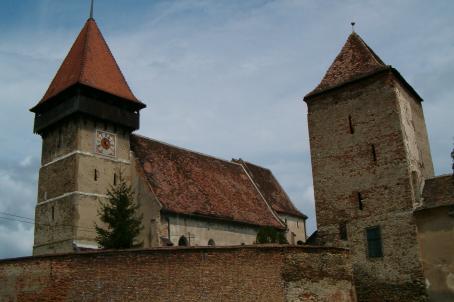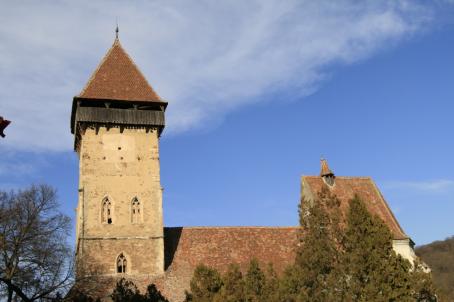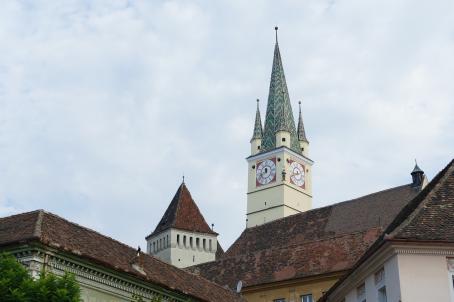Dârlos Fortified Church
The small aisle-less church without tower from the 15th century is almost entirely preserved. The chancel was rebuilt in 1500 and the ceiling of the nave dates back to a construction phase from the 19th century. Nothing from the initial defense wall has remained. The importance of the church is given by its mural paintings and constructive details. Painting remains can bee still seen on the western funnel-shaped portal, which features a fine crafted profile. The chancel is richly decorated with figures sculptured in stone placed on the consoles of the ribs. Tracery, the portal of the sacristy, the tabernacle and the sedilia are particularly valuable as well. Conservation works have been carried out in order to preserve the ample paintings in the chancel, representing biblical scenes. The mural paintings on the exterior walls of the chancel are a unique testimony of the past: depictions of the Passions of Christ resemble the mural paintings on the monasteries in Moldavia from the beginning of the 16th century.
About this building
For more information visit on this building visit https://kirchenburgen.org/en/location/durles-darlos/






